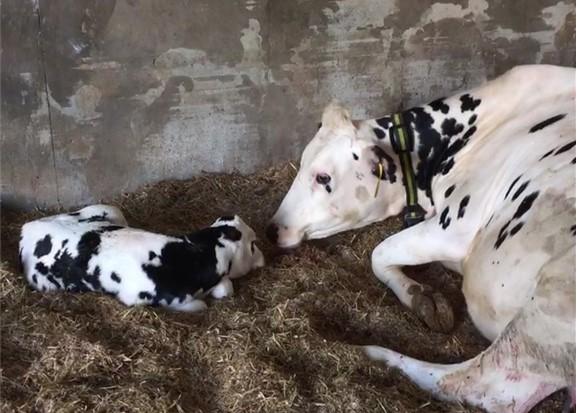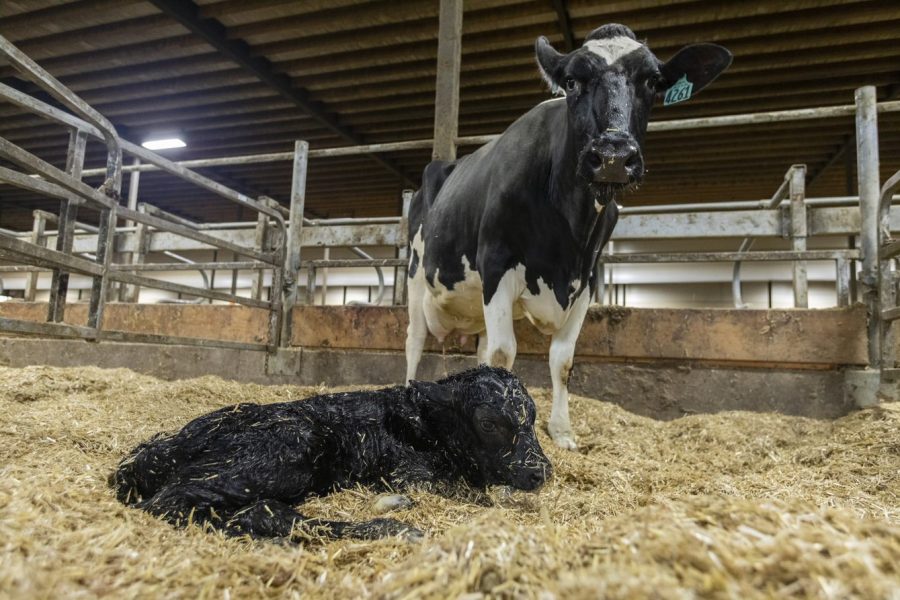Discover how understanding ketones and ketosis can boost your dairy cow’s health and productivity. Are ketones the key to overcoming metabolic challenges?

For dairy farmers, the importance of herd health and productivity is undeniable. Beyond the daily tasks, ketosis’s metabolic process plays a significant role in determining the cows’ well-being and the farm’s profitability. Understanding ketones and ketosis is not just theoretical knowledge; it directly influences milk production, animal health, and financial stability. Neglecting ketosis can result in lower milk yields, increased disease susceptibility, and economic loss. By grasping the practical implications of this metabolic process, you can make informed decisions to improve your herd’s health and your farm’s success.
Ketosis, a crucial metabolic disorder, indicates a cow’s struggle with energy deficits, particularly during the high-stress transition into lactation. This can lead to early herd removal and significant economic challenges. We’ll delve into the reasons behind these metabolic changes and their impact on your herd, providing practical management strategies. We aim to simplify this science and offer insights you can immediately apply to enhance your herd’s health and your farm’s success. Explore the evolving understanding of ketones and ketosis in dairy cows.
The Vital Role of Ketones in Dairy Cow Lactation
Ketones are vital organic compounds that provide an alternate energy source when glucose is scarce. As dairy cows transition into lactation, their energy needs surge to support milk production. If their carbohydrate intake falls short, their bodies begin breaking down fat stores, producing ketones as standby fuel to sustain essential functions and maintain milk output.
This metabolic process is critical during the stressful transition into lactation. When a cow’s diet doesn’t supply enough energy, the liver converts fatty acids into ketones like β-hydroxybutyrate (BHB), acetoacetate, and acetone. These ketones circulate in the bloodstream, providing energy to the body’s tissues. While this is a natural adaptive response, over-reliance on ketones can lead to ketosis, a potentially harmful condition if not properly managed. Understanding this balance is crucial for keeping dairy cows healthy and productive.
Balancing Act: Healthy Hyperketonemia vs. Pathological Ketosis in Dairy Cows
Ketosis is a common metabolic issue in dairy cows, marked by elevated levels of ketone bodies in the blood. This usually happens when cows transition into lactation and face an energy deficit. When their energy needs for milk production exceed their nutritional intake, their bodies start mobilizing fat stores, producing ketones as an alternative energy source.
It’s important to differentiate between healthy hyperketonemia and pathological ketosis. Healthy hyperketonemia occurs when increased ketone levels help maintain energy balance without causing health issues. Conversely, pathological ketosis involves excessively high ketone levels that the cow’s metabolism can’t handle, causing toxic effects and health problems.
Pathological ketosis often appears in early lactation and can cause reduced milk yield, poor reproductive performance, and a higher risk of other metabolic disorders. The unpredictable nature of these outcomes is made worse by different factors like cow management, nutrition, and genetics, complicating the direct effects of ketosis.
Grasping the delicate balance between beneficial and harmful ketone levels is a game-changer for dairy farmers. By recognizing the intricacies of ketosis, you can develop better management strategies, enhancing the health and productivity of your dairy cows. This understanding holds the promise of a more successful and sustainable future for your farm.
Ketosis and Milk Production: Unraveling the Economic and Biological Complexities
| Metric | Healthy Cows | Cows with Ketosis | Economic Impact ($ per cow) |
|---|---|---|---|
| Average Daily Milk Yield (liters) | 30 | 25 | -150 |
| Incidence of Periparturient Disease (%) | 5 | 20 | -300 |
| Culling Rate (%) | 10 | 25 | -500 |
| Treatment Costs ($) | 50 | 200 | -150 |
| Total Economic Loss ($) | N/A | N/A | -1100 |
The interplay between ketosis and milk production is crucial for dairy farmers. Typically, ketosis has been blamed for reduced milk yield due to energy deficits in early lactation. Subclinical ketosis can result in milk losses of 3-5 pounds per cow daily, translating to $0.54 to $0.90 per cow at $0.18 per pound, leading to substantial financial strain over time.
However, emerging research brings a fresher perspective. Some studies indicate that controlled hyperketonemia, or elevated blood ketones in healthy cows, could enhance metabolic efficiency. This suggests ketones act as an alternative energy source, helping to ease the metabolic burden of high milk production.
The economic impact is crystal clear. By implementing effective management that distinguishes between harmful ketosis and beneficial hyperketonemia, you can boost milk yield and herd health, enhancing your farm’s economic sustainability. This underscores the power of your vigilance and evidence-based strategies in maximizing productivity and minimizing losses.
Unveiling the Full Spectrum of Ketosis-Related Health Risks in Dairy Herds
Ketosis, though primarily a metabolic disorder, is closely tied to numerous health issues in dairy cows, including displaced abomasum, retained placenta, metritis, mastitis, and fatty liver syndrome. These ailments can significantly affect a cow’s health, lower milk production, and require costly veterinary care.
Such health problems disrupt milk production and decrease overall herd productivity. For example, a displaced abomasum often needs surgery and lengthy recovery, lowering milk output. Metritis and mastitis cut down milk yield and affect milk quality, sometimes making it unmarketable.
Cows with ketosis-related complications are more likely to be culled early, losing future milk production and causing the expense of replacing them. Thus, economic burdens arise from treatment costs, lost income, and the need for herd replacements, threatening the profitability and sustainability of dairy farming.
Navigating the Maze of Ketosis Research: The Imperative for Controlled Studies in Dairy Cow Health
Research on ketosis in dairy cows is extensive, driven by the need to manage this common metabolic disorder during the transition into lactation. While studies highlight the economic and health impacts of ketosis, there still needs to be a gap in fully understanding its complexities due to the prevalence of observational research. Much of the literature links ketosis to reduced milk production and increased health risks. However, these associations are often inconsistent and muddied by overlapping variables.
Observational studies help identify patterns but present significant limitations. They often need to control for confounding factors, making it hard to establish transparent causal relationships. Differences in farm management practices, genetic variations among cows, and environmental factors can all influence outcomes, complicating our understanding of ketosis’s true impact.
Controlled randomized experiments are the beacon of hope in addressing these limitations. These experiments offer a more rigorous investigation by eliminating confounders and isolating ketosis’s effects on health and productivity. The future of our knowledge of ketosis depends on adopting experimental designs that offer greater precision and reliability, providing more accurate insights and actionable recommendations for dairy farmers like you.
Revolutionizing Dairy Health: The Hidden Benefits of Ketones
Emerging research is now revealing the surprising benefits of ketones in dairy cows. Once seen only as markers of metabolic disease, recent studies, like those by Zhang and Ametaj (2020), suggest they have protective effects against metabolic dysfunction and chronic ailments. Ketones are not just indicators of an energy deficit; they are crucial health-promoting metabolites.
Ketones have been found to act as potent signaling molecules that reduce oxidative stress and inflammation, significant contributors to dairy cows’ metabolic diseases. These anti-inflammatory properties can significantly lower the risks of disorders during the transition period, thereby boosting cow health and longevity.
Additionally, ketones serve as alternative energy sources during glucose insufficiency, offering metabolic flexibility to maintain productivity, especially in early lactation when energy demands are high. This process helps balance energy use, reduce protein breakdown for glucose production, conserve muscle mass, and promote overall metabolic health.
This fresh perspective challenges the traditional view of hyperketonemia as purely pathological. It encourages a more comprehensive understanding of the potential health benefits of ketones. Integrating these insights can lead to innovative nutritional strategies and management practices that sustainably enhance dairy cow health and productivity.
Ketoacidosis Prevention: Practical Tips for Dairy Farmers
Preventing ketoacidosis is vital for maintaining dairy cow health and productivity. Here are some practical tips for dairy farmers:
Monitoring Ketone Levels
Regularly test ketone levels using handheld ketone meters with blood, urine, or milk tests. Focus on the first two weeks postpartum when cows are most vulnerable.
Nutritional Management
- Energy-Rich Diets: Feed energy-dense diets with quality forages and grains during transition.
- Controlled Transition Diet: Gradually introduce lactation diets before calving to reduce metabolic stress.
- Feed Additives: Use additives like propylene glycol to lower ketone bodies.
- High Propionate Levels: Opt for rations that boost propionate production for better glucose synthesis.
Preventive Management
- Body Condition: Maintain an optimal body condition score (BCS) during the dry period.
- Frequent Small Meals: Encourage multiple small feedings to ensure consistent energy intake.
- Stress Reduction: Minimize stress with comfortable housing, good ventilation, and consistent routines.
- Postpartum Monitoring: Closely monitor cows postpartum for early signs of ketosis.
These strategies can reduce ketosis, protect cow health, and boost milk production, enhancing your dairy operation’s sustainability.
The Bottom Line
Once seen simply as a harmful metabolic issue, ketosis in dairy cows needs a deeper look. It’s not just a problem; ketones and ketosis have complex roles in cow health. This article discusses the differences between harmful ketosis and healthy hyperketonemia, emphasizing the need for controlled studies to understand these concepts better.
Understanding the benefits of ketones in reducing metabolic issues and chronic diseases can improve dairy cow health and productivity. Critical practices include nutritional care, prevention, and accurate monitoring. Embracing new evidence on ketones may transform dairy herd management.
Dairy farmers must stay informed and adaptable. They must keep up with the latest research, adopt innovative practices, and meticulously manage herd health to boost milk production, ensure economic sustainability, and enhance overall well-being.
Call to Action: Proactively manage ketones and ketosis. Engage with new research, consult with veterinary nutritionists, and apply proven strategies in your operations. The future of dairy farming relies on turning challenges into opportunities for better health and productivity.
Key Takeaways
- Ketosis, traditionally seen as a metabolic disorder, often reflects an adaptation to energy deficit during early lactation.
- The impact of ketosis on milk production and health is inconsistent, possibly due to various confounding factors.
- The distinction between pathological ketosis and healthy hyperketonemia is crucial in understanding dairy cow health.
- Ketones may play beneficial roles in mitigating metabolic dysfunction and promoting overall cow health.
- To accurately assess ketosis, controlled randomized experiments are necessary, as observational studies have limitations.
- Practical measures like monitoring ketone levels, and improved nutritional and preventive management can help prevent ketoacidosis.
Summary:
Ketosis is a metabolic disorder in dairy cows that affects milk production, animal health, and financial stability. It occurs when cows transition into lactation and face an energy deficit, leading to the mobilization of fat stores and the production of ketones as an alternative energy source. Healthy hyperketonemia maintains energy balance without health issues, while pathological ketosis involves excessively high ketone levels that the cow’s metabolism cannot handle, causing toxic effects and health problems. Pathological ketosis often appears in early lactation and can lead to reduced milk yield, poor reproductive performance, and a higher risk of other metabolic disorders. Understanding the balance between beneficial and harmful ketone levels is crucial for dairy farmers to improve milk yield, herd health, and economic sustainability. Controlled randomized experiments are urgently needed to address these limitations and provide actionable recommendations.












